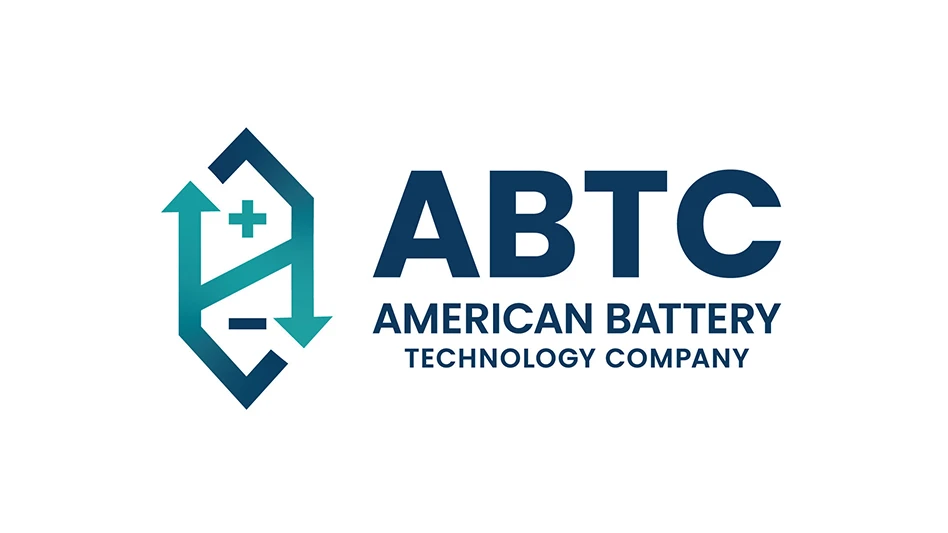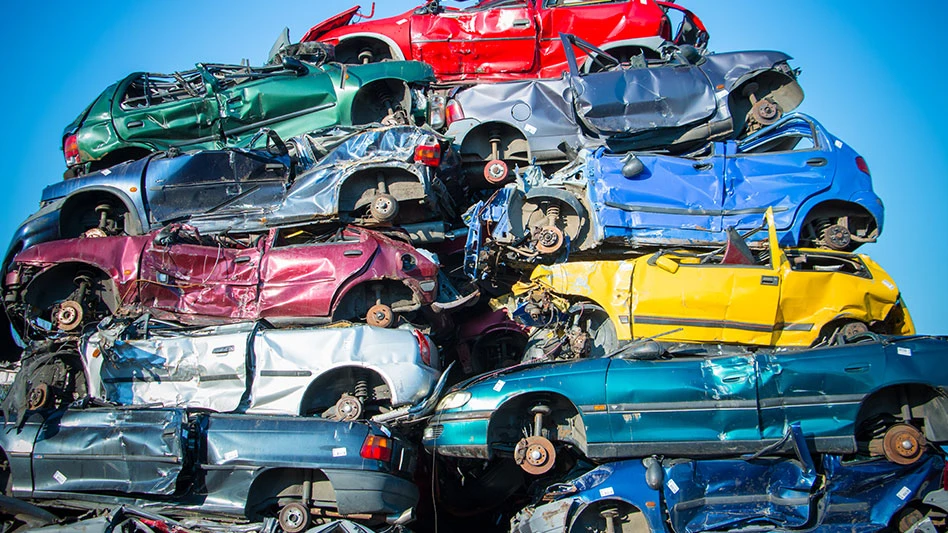
 A change in export patterns for the mixed metal grade referred to as zorba, combined with near record-low prices for this grade, is changing the way recyclers deal with this material.
A change in export patterns for the mixed metal grade referred to as zorba, combined with near record-low prices for this grade, is changing the way recyclers deal with this material.
Typically produced by downstream sorting operations associated with the automobile shredding process, zorba is the largest of the shredded mixed metals grades by volume.
Comprising mostly aluminum, zorba is defined by the Institute of Scrap Recycling Industries Inc. (ISRI) “Scrap Specifications Circular 2013,” as shredded nonferrous scrap that contains aluminum as well as copper, lead, magnesium, stainless steel, nickel, tin and zinc.
According to David Wallace, senior vice president of recycler Huron Valley Steel Corp., Trenton, Michigan, zorba is likely the largest volume nonferrous material produced by auto shredders as a whole. Huron Valley Steel is among the top zorba processors domestically.
China historically has been the top purchaser of the zorba mixed metals grade, but buyers there have dramatically pulled back on their purchasing of these nonferrous grades in recent months, as has been widely reported throughout the industry.
 “Availability has loosened up for domestic purchasers like us because Chinese consumers are buying less zorba,” says Wallace. “In particular, a couple of very large Chinese secondary smelters have backed off buying zorba because other sources of material have become available to them in the last few months.”
“Availability has loosened up for domestic purchasers like us because Chinese consumers are buying less zorba,” says Wallace. “In particular, a couple of very large Chinese secondary smelters have backed off buying zorba because other sources of material have become available to them in the last few months.”
On that note, Wallace explains, in the last few months Chinese buyers have turned to cheaper prime aluminum that can be alloyed with cheaper grades of aluminum scrap.
Furthermore, Wallace says, this purchasing change has led to greater availability of zorba for domestic buyers. He explains that while Chinese buyers haven’t stopped purchasing zorba, they are buying — and paying — less.
The increased availability of zorba on the domestic market also may help explain recent price drops for the grade. According to news reports from American Metal Market (AMM), prices for the zorba grade dropped by about 1.5 cents over the last few weeks, to a level of around 67 cents for material with close to 95 percent metallic content. Prices for material with metallic content of between 90 and 92 percent were flat in late April at around 65 cents per pound, AMM reports.
Robert Stein, senior vice president of nonferrous marketing for St. Louis-based Alter Trading Corp. and also president of the Bureau of International Recycling’s (BIR) Nonferrous Division, says there has at least been a perceived downturn in demand for zorba from China, but it may not necessarily be for the long term.
Mark Hadacek, director of nonferrous marketing for Alter Trading and a colleague of Stein’s, says the absence of Chinese buyers from this market continues to be evident to some extent.
“Ever since Chinese New Year, they have been very quiet,” Hadacek observes.
U.S. export data seem to back this observation: According to figures from the U.S. Census Bureau, U.S. exports of aluminum scrap to China were down by close to 26 percent for February 2014 compared with February 2013, to 81,500 metric tons.
In fact, Hadacek adds, there was a time earlier in 2014 when Chinese buyers found it cheaper to use primary aluminum than to source zorba from the United States. Now, he says, that condition has diminished, so Chinese buyers have resumed using zorba to fill their furnaces, he says, and have since returned to the market a little more aggressively.
On the home front, says Hadacek, domestic consumers of zorba still appear to be dealing with plentiful levels of material.
“The domestic consumers seem to have their fill, but the export consumers are fairly aggressively looking for material at this time,” he says.
Toward this end, Hadacek says while China remains the largest export consumer of zorba, other consumers in the Far East, such as India, Malaysia and Vietnam, have been taking advantage of the current low prices for zorba.
Similarly, Wallace says it appears buyers in India have picked up some of the slack in the market, but he adds, “they do not pay the prices China has been paying, which helps U.S. consumers of zorba be more competitive in their purchases.”
Rising quality
 The quality of the zorba being demanded by China and other Eastern export markets has increased, however, since the days of Operation Green Fence.
The quality of the zorba being demanded by China and other Eastern export markets has increased, however, since the days of Operation Green Fence.
The stricter environmental regulations that ensued from that effort, combined with increasing labor challenges in China, Hadacek says, have culminated in zorba’s declining popularity in that country.
“The days of shipping low metallic content material into China are pretty much over,” Hadacek says. “From that standpoint they are looking for higher metallic content material.”
It’s a point also made by Philip Kasden, manager of sales and marketing for metals upgrading company wTe Recycling, based in Bedford, Massachusetts. WTe runs one shredding operation and purchases additional nonferrous material from other shredding companies for processing and resale. He, too, has witnessed price drops of around 1 or 2 cents in recent months. But, he says, the company continues to export zorba.
|
A cleaner zurik for domestic buyers Another mixed metals grade produced at auto shredding facilities, zurik, that is produced in far lower quantities than zorba and comprises predominantly stainless steel also is being subjected to changing market dynamics. The Institute of Scrap Recycling Industries Inc. (ISRI) “Scrap Specifications Circular 2013” defines zurik as shredded nonferrous scrap generated by sensor sorters and comprising predominantly stainless steel. Currently, says Mark Hadacek, director of nonferrous marketing for Alter Trading Corp., St. Louis, says this dirty-looking downstream grade, left over after zorba has been removed, tends to be problematic for overseas markets. “Circuit boards tend to be concentrated in that product,” he says. Pegged as an environmental safety issue, circuit boards cannot be exported to China as part of a mixed metals product. Hadacek says that while there are generally no export markets for unrefined zurik in Asia presently, with recent price movements on the London Metal Exchange (LME) in the price of nickel, more and more domestic customers are willing to hand sort and upgrade zurik, producing a cleaner stainless product for sale domestically. “There’s a lot of incentive to do that,” he says. On that note, the LME price of nickel reached an April average of $17,366.50, a level not seen since February 2013. |
The company produces a zorba 90 grade (with at least 90 percent nonferrous content), which Kasden says is a requirement for today’s export markets. This higher percentage helps ensure containers are filled with as much metal content and as little waste as possible, he explains.
From the labor standpoint, both Stein and Hadacek say not only have wages increased significantly in China over the last couple of years, but more recycling companies or processors are having difficulty finding laborers to sort mixed metals products such as zorba.
Sponsored Content
Still relying on manual sorters?
Let AI do the heavy lifting. Waste Robotics delivers reliable, high-performance robots tailored for complex waste streams. They require minimal maintenance, are easy to operate, and are designed to boost your recovery rates. Smarter sorting starts with the right partner. Waste Expo Booth #1969 & REMA #2843
Click here to see our robots in action!“A lot of companies we deal with have had trouble with this,” says Hadacek. He describes an apparent trend in which workers travel inland, perhaps to visit their families for Chinese New Year, and then they don’t return. “There seems to be more work in the interior of China,” he adds.
Stein concedes there has been a paradigm change in China regarding this grade in light of the recent labor issues. “When I first got involved in exporting scrap to China 20 years ago,” he says, “zorba was completely hand sorted.” In those days, he says, the cost of labor was around $80 per month per worker. Today, he says, that rate has gone up tenfold.
These issues have led some Chinese zorba consumers to modify their processing habits too. “A lot of the hand sorting has changed to mechanical processes, which are ultimately cheaper and perhaps more efficient,” says Stein. He points out that in China, unlike other regions, many of the media processing facilities are owned by the Chinese consumers. “They are able to buy zorba, process it through a media plant and run it straight to their furnaces to make ingots,” he says. “That’s quite a change.”
Furthermore, Hadacek says that because China’s zorba buyers may be having more difficulty finding labor, some are increasingly seeking higher quality products, such as a 95-percent-nonferrous content zorba. “If they can buy 95 percent, it makes it easier for them,” explains Hadacek.
Meanwhile in the U.S. and Europe, where zorba is already being treated mechanically, “I don’t think it’s changed that much,” Stein says of the market.
The next level
With the reported oversupply of and low pricing for zorba draining profitability for processors, upgrading zorba to the next level is a current topic of discussion among recyclers and equipment suppliers alike.
For zorba, that next level is twitch, a product generally defined by ISRI’s “Scrap Specifications Circular 2013” as shredded aluminum scrap generated by a wet or dry media separation process and with 98 percent nonferrous content.
Hadacek describes recent pricing changes in mixed metals markets. “Historically the zorba price has been such that it is not always advantageous to separate it to twitch and sell it domestically,” he says. However, he adds, that has not been the case for a few months now.
“When the domestic twitch market is higher than zorba, then it makes sense to generate twitch and sell domestically,” he says. He also points to a wider price spread in recent months between the U.S. and Chinese prices of twitch. This situation means most domestic processors producing twitch are selling it domestically.
Concerning twitch exports to China, Hadacek says it’s not an area that has been advantageous for domestic sellers. Furthermore, most of China’s larger consumers are now installing media plants so they can upgrade zorba themselves.
Kasden observes that the current low prices and plentiful supply are probably helpful to some. “Any time you take a big competitor out of the marketplace, it’s got to help the other guys,” he says.
The author is a managing editor with the Recycling Today Media Group and can be reached at lmckenna@gie.net.
Get curated news on YOUR industry.
Enter your email to receive our newsletters.

Explore the June 2014 Issue
Check out more from this issue and find your next story to read.
Latest from Recycling Today
- Circular by Shapiro releases "5 for Five" sustainability series
- Graphic Packaging set to close Ohio CRB facility
- Ameripen voices support for Maryland EPR bill
- Matalco to close Canton, Ohio, plant
- Maryland county expands curbside recycling to include electronics
- California EPS ban will be enforced
- YKK AP America introduces BetterBillet
- Fresh Perspective: Cameron Keefe








